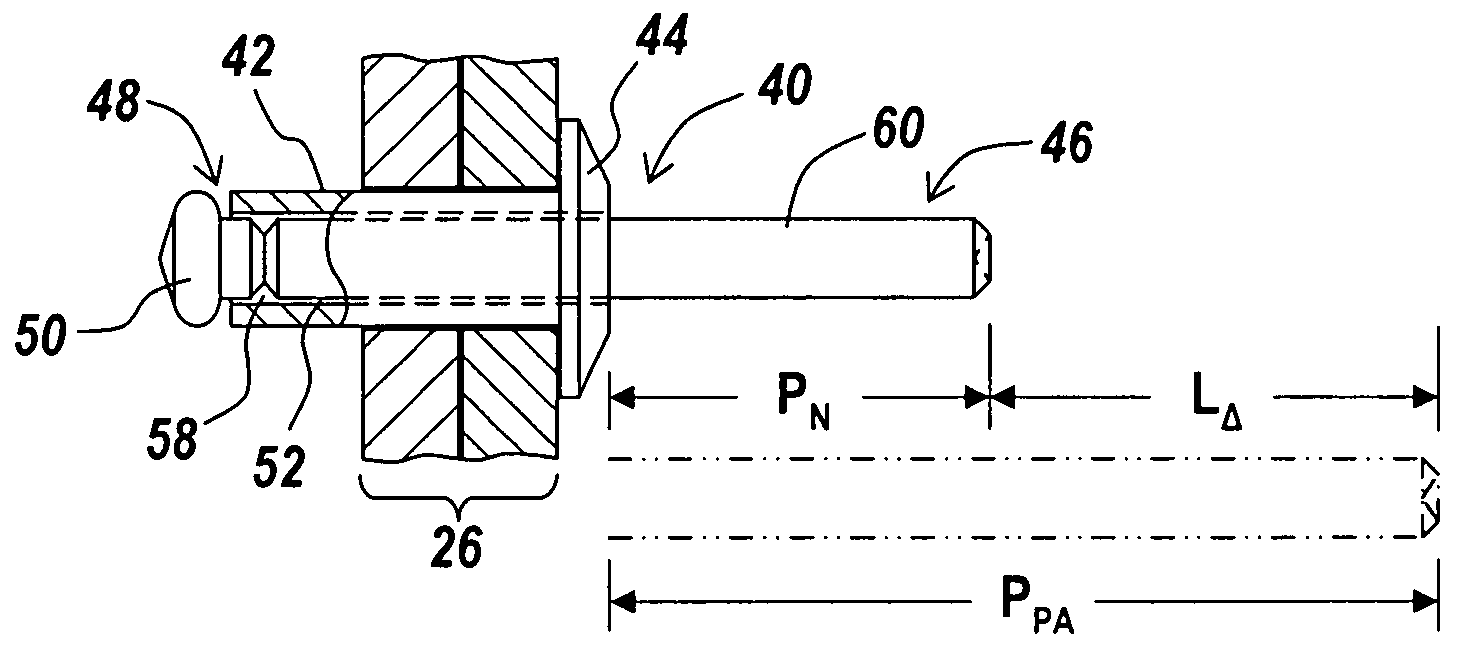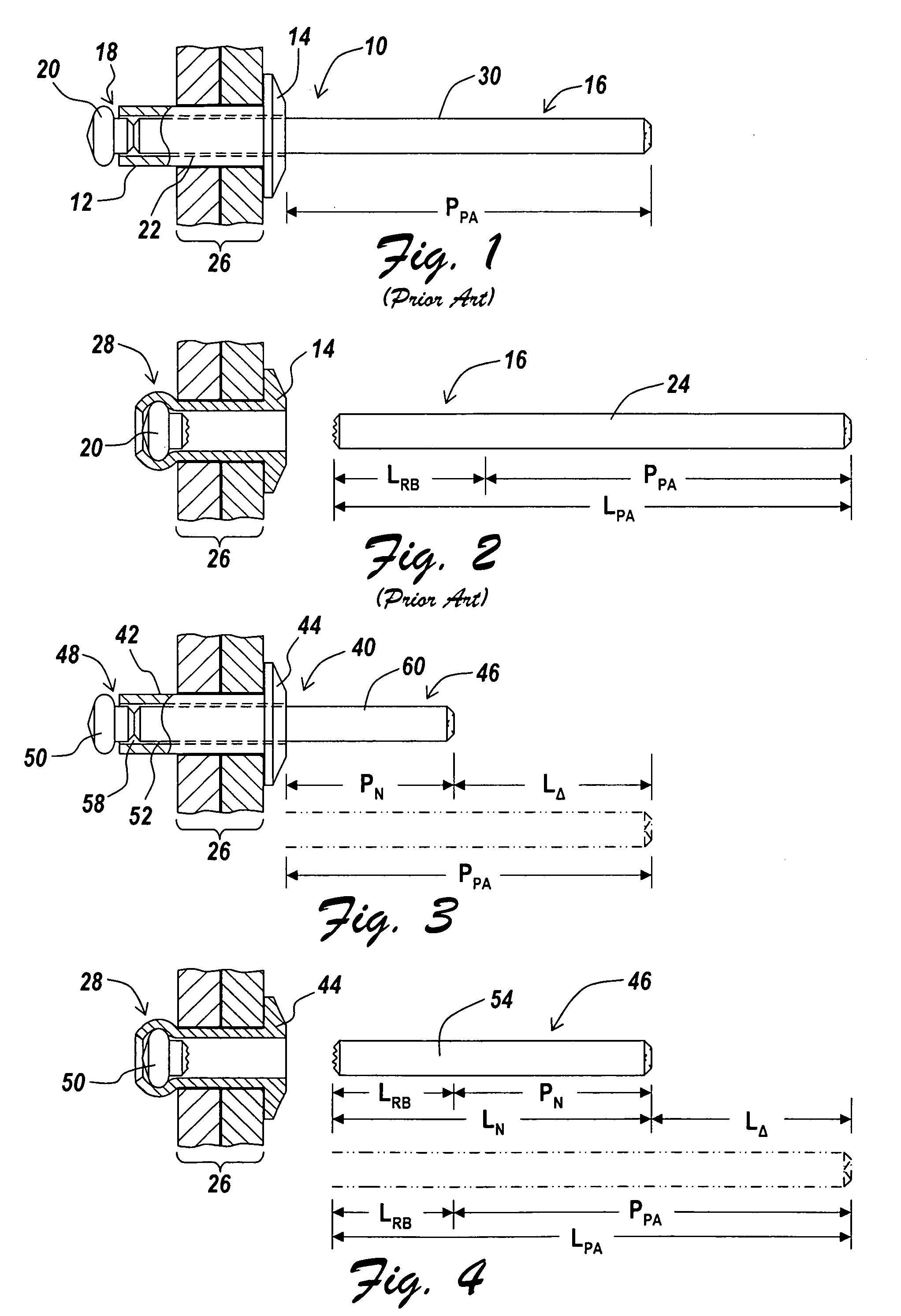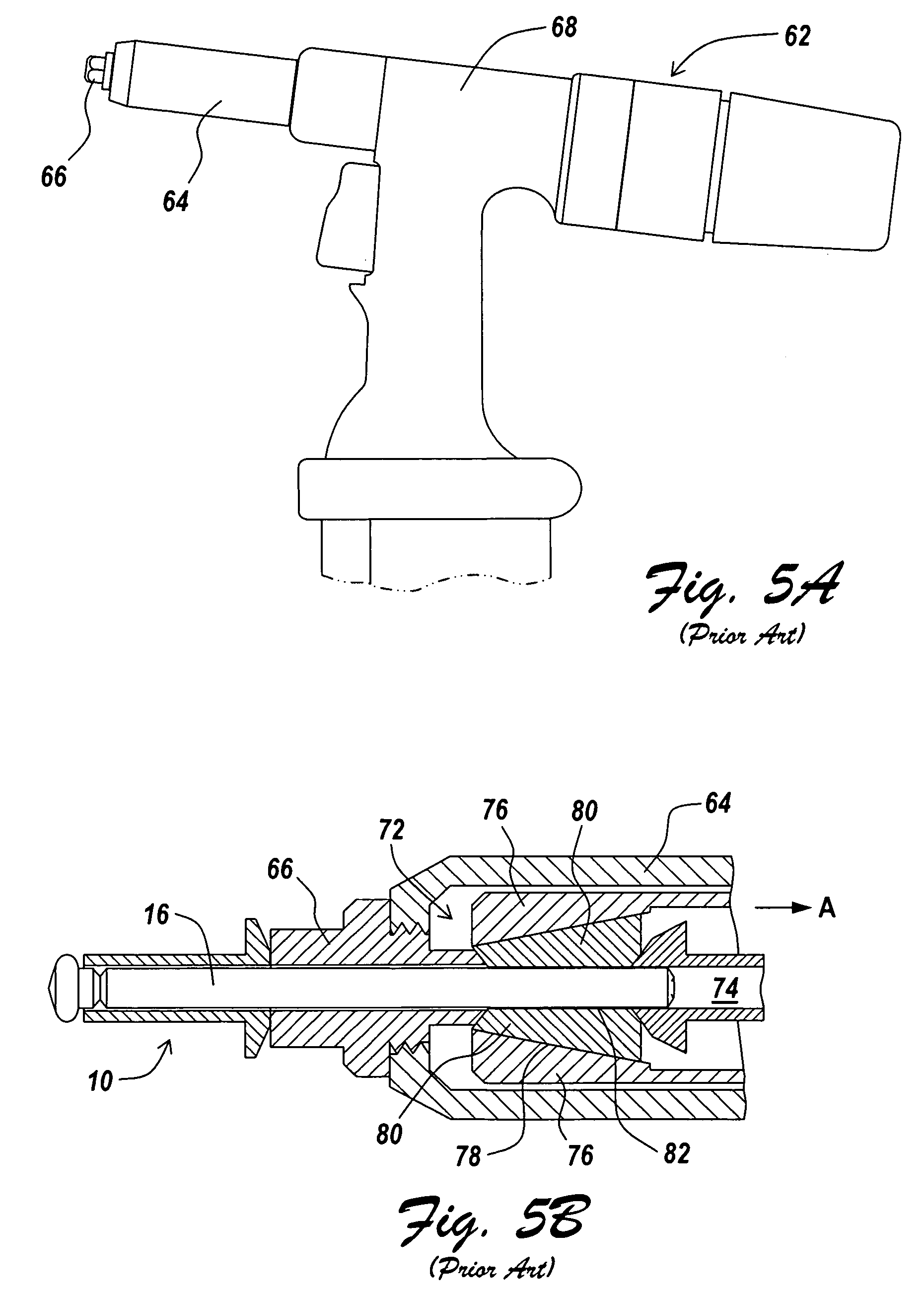Blind rivet
a blind rivet and rivet technology, applied in the field of blind rivets, can solve the problems of not being able to loosely set, loosely set, and generally not being able to under-torque, over-torque, etc., and achieve the effects of reducing the amount and cost of materials, minimizing the cost of production, use, and disposal of spent mandrels
- Summary
- Abstract
- Description
- Claims
- Application Information
AI Technical Summary
Benefits of technology
Problems solved by technology
Method used
Image
Examples
Embodiment Construction
[0034]An illustrative embodiment of the present invention relates to a blind rivet design having an exposed mandrel portion modified from the conventional and standardized mandrel to reduce the amount and cost of the material required to produce the mandrel, while also minimizing costs related to production, use, and spent mandrel disposal, all while still making use of conventional riveting tools for blind rivet setting and maintaining rivet performance. The mandrel is not required to have an unsmooth surface feature for a riveting tool to capture during rivet installation. To work with the inventive blind rivet design, a conventional riveting tool, i.e., a rivet gun with a replaceable nose housing and modified nosepiece, may be utilized, with a modified nose housing attached. The modified nose housing and modified nosepiece on the conventional rivet setting tool enables use of a mandrel having a reduced exposed mandrel portion relative to conventional and standardized mandrels. In...
PUM
| Property | Measurement | Unit |
|---|---|---|
| distance | aaaaa | aaaaa |
| distance | aaaaa | aaaaa |
| distance | aaaaa | aaaaa |
Abstract
Description
Claims
Application Information
 Login to View More
Login to View More - R&D
- Intellectual Property
- Life Sciences
- Materials
- Tech Scout
- Unparalleled Data Quality
- Higher Quality Content
- 60% Fewer Hallucinations
Browse by: Latest US Patents, China's latest patents, Technical Efficacy Thesaurus, Application Domain, Technology Topic, Popular Technical Reports.
© 2025 PatSnap. All rights reserved.Legal|Privacy policy|Modern Slavery Act Transparency Statement|Sitemap|About US| Contact US: help@patsnap.com



